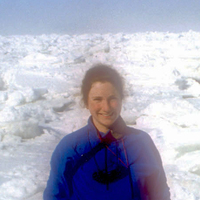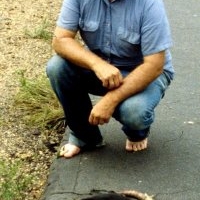
Cindy Looy
Related Authors
Nima Nezafati
Deutsches Bergbau-Museum, Bochum
Nicolas Coltice
École Normale Supérieure
Hemin Koyi
Uppsala University
Armando Marques-Guedes
UNL - New University of Lisbon
Gabriel Gutierrez-Alonso
University of Salamanca
Anne-Marie Tosolini
University of Melbourne
sabina porfido
Consiglio Nazionale delle Ricerche (CNR)
Greg McDonald
Colorado State University
Jeremy R Young
University College London
Paul Upchurch
University College London









Uploads
Papers by Cindy Looy
Permian boundary in Abo Canyon, New Mexico. Charles B. Read collected the fossils in 1940 and 1941; Read’s
field notes cannot be located. A combination of Read’s bed numbering pattern, his notes in the collections, and collection
taxonomic composition permits them to be placed in an oldest to youngest sequence. The youngest fossils, from the Abo
Formation of early Permian age, anchor the collection stratigraphically. A collection labeled “Base of Red Magdalena” is most
likely equivalent to the modern Bursum Formation, thus immediately below the Abo. The three remaining collections are from
the Upper Pennsylvanian portion of the Atrasado Formation. All collections are dominated or codominated by plants typical
of environments with seasonal moisture stress and record increasing moisture limitation through time. Conifers, Sphenopteris
germanica, and mixoneurid odontopterids are common to abundant in pre–Abo Formation collections. These same collections
also contain wet-substrate taxa, particularly calamitaleans and marattialean tree ferns, with arborescent lycopsids in the oldest
collection. The middle three collections contain the remains of microconchids/spirorbids, snails, ostracods, and conchostracans
closely associated with the plant remains, indicating brackish to marine salinities at the burial sites of the organics. The Abo
Pass collections document Pennsylvanian–Permian floristic changes in the western Pangean equatorial belt, an important point
of comparison to better studied floras from this same interval in central Pangea (eastern United States and Europe). Most of the
plants in the western equatorial assemblages are the same as those of similar age from west central to central Pangea (Euramerica),
indicating a widespread tropical biogeographic province at this time, but within which there were several distinct biomes.
Permian boundary in Abo Canyon, New Mexico. Charles B. Read collected the fossils in 1940 and 1941; Read’s
field notes cannot be located. A combination of Read’s bed numbering pattern, his notes in the collections, and collection
taxonomic composition permits them to be placed in an oldest to youngest sequence. The youngest fossils, from the Abo
Formation of early Permian age, anchor the collection stratigraphically. A collection labeled “Base of Red Magdalena” is most
likely equivalent to the modern Bursum Formation, thus immediately below the Abo. The three remaining collections are from
the Upper Pennsylvanian portion of the Atrasado Formation. All collections are dominated or codominated by plants typical
of environments with seasonal moisture stress and record increasing moisture limitation through time. Conifers, Sphenopteris
germanica, and mixoneurid odontopterids are common to abundant in pre–Abo Formation collections. These same collections
also contain wet-substrate taxa, particularly calamitaleans and marattialean tree ferns, with arborescent lycopsids in the oldest
collection. The middle three collections contain the remains of microconchids/spirorbids, snails, ostracods, and conchostracans
closely associated with the plant remains, indicating brackish to marine salinities at the burial sites of the organics. The Abo
Pass collections document Pennsylvanian–Permian floristic changes in the western Pangean equatorial belt, an important point
of comparison to better studied floras from this same interval in central Pangea (eastern United States and Europe). Most of the
plants in the western equatorial assemblages are the same as those of similar age from west central to central Pangea (Euramerica),
indicating a widespread tropical biogeographic province at this time, but within which there were several distinct biomes.